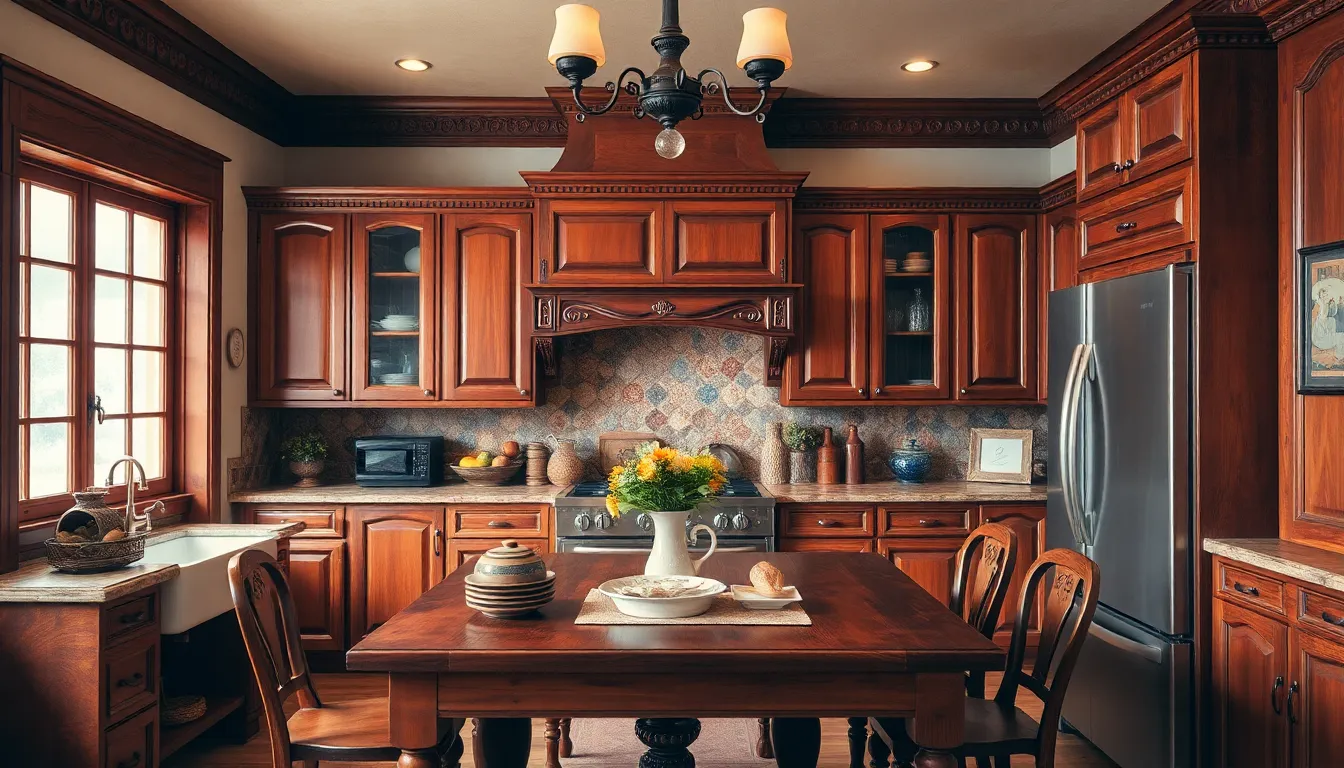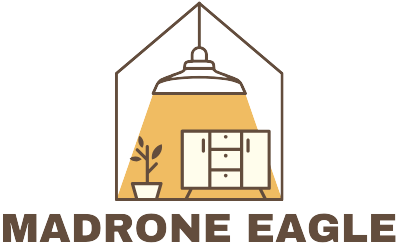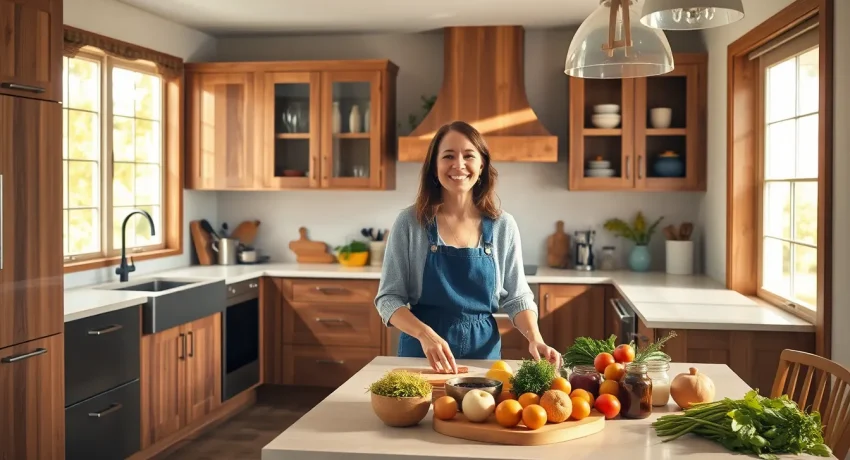When it comes to kitchen styles, the choices are as diverse as the ingredients in a gourmet dish. Whether you’re dreaming of a sleek modern space that screams “I’ve got my life together” or a cozy farmhouse vibe that invites friends over for endless brunches, the right style can transform a mundane cooking area into the heart of the home.
Table of Contents
ToggleOverview Of Kitchen Styles
Kitchen styles vary widely, tailoring to personal tastes and functional needs. Traditional kitchens emphasize classic designs with ornate details, featuring wood cabinetry and warm color palettes. Modern kitchens focus on clean lines and minimalistic aesthetics, often incorporating stainless steel appliances and sleek surfaces.
Rustic kitchens present a homey atmosphere, using natural materials like reclaimed wood and stone. Industrial kitchens showcase raw elements, including exposed brick and metal fixtures, creating a unique urban vibe. Contemporary kitchens blend current trends while maintaining functionality, favoring open layouts and innovative storage solutions.
Farmhouse styles combine charm and practicality, often seen with large islands and vintage accents. Mediterranean kitchens enjoy bright colors, featuring terracotta tiles and decorative patterns, promoting a vibrant environment. Scandinavian designs prioritize simplicity and functionality, utilizing light colors and natural light to enhance space.
Creating a cohesive kitchen design involves understanding how these styles impact overall aesthetics. Each kitchen style resonates differently with homeowners, offering opportunities to reflect their personalities and lifestyle choices. Selecting the right style can transform a standard kitchen into a gathering space that inspires cooking and connection.
Traditional Kitchen Styles

Traditional kitchen styles evoke a sense of warmth and charm. These kitchens often serve as the heart of the home, featuring classic designs that blend comfort with elegance.
Characteristics
Traditional kitchens display ornate details, including decorative moldings and archways. They often include warm color palettes, such as soft whites, creams, and muted earth tones. Rich wood cabinetry enhances the inviting atmosphere, while intricate tile backsplashes add to the visual interest. Classic appliances, like stoves and refrigerators, complement the overall appearance, providing both style and functionality. Lighting fixtures, often in wrought iron or delicate glass, create a cozy environment for cooking and entertaining.
Popular Designs
Several popular designs embody traditional kitchen styles. Colonial kitchens showcase symmetrical layouts and classic elements, reflecting early American architecture. Victorian kitchens highlight elaborate woodwork and rich fabrics, creating a luxurious feel. French country kitchens emphasize rustic charm with distressed finishes and bright colors. Craftsman kitchens focus on handmade details and natural materials, resonating with a straightforward aesthetic. Country kitchens integrate farmhouse elements, such as open shelving and vintage accessories, reinforcing a warm, homely vibe.
Modern Kitchen Styles
Modern kitchen styles emphasize functionality and aesthetics, showcasing innovative design elements and technology. These kitchens reflect contemporary trends while creating inviting spaces.
Minimalist Approach
Clean lines define minimalist kitchens. Essentials like sleek cabinetry and smooth surfaces feature prominently. Neutral color palettes enhance simplicity, often incorporating whites, grays, and blacks. Space becomes open, promoting a clutter-free environment. Storage solutions maximize functionality without sacrificing style. With fewer decorative elements, the focus shifts to the quality of materials used, such as stainless steel and glass. Minimalist designs encourage a calm atmosphere, where the kitchen remains a serene space for cooking and socializing.
Technology Integration
Smart tech plays a significant role in modern kitchens. Appliances like Wi-Fi-enabled refrigerators and touch-activated faucets enhance convenience. Lighting systems can adjust through mobile apps, creating the perfect ambiance. Additionally, voice-controlled devices streamline daily tasks, making meal preparation efficient. Energy-efficient appliances optimize performance while reducing environmental impact. Screens and tablets often replace traditional cookbooks, offering recipes at the fingertips. Overall, technology seamlessly integrates, transforming kitchens into hubs of innovation and practicality.
Rustic Kitchen Styles
Rustic kitchen styles embody warmth and charm, drawing inspiration from nature and traditional craftsmanship. These kitchens often focus on using organic materials that create a homey atmosphere.
Materials and Textures
Wood dominates rustic kitchen designs, frequently appearing in furniture, cabinetry, and accents. Reclaimed wood adds character, often showcasing imperfections that tell a story. Stone elements, like granite or slate, also enhance the natural feel, providing durability and texture. Wicker and natural fibers introduce subtle softness through seating and decor. Additionally, metal finishes, such as wrought iron or bronze, contribute to a timeless style, balancing rustic warmth with a hint of elegance.
Color Palettes
Earthy tones define rustic kitchen color palettes, emphasizing connections to nature. Warm browns, muted greens, and soft creams create inviting backdrops, promoting relaxation and comfort. Shades of deep red and amber add depth, offering a cozy, inviting feel. Accent colors may include terracotta or muted blues, providing subtle contrasts without overpowering the overall theme. Light fixtures and cabinetry often retain their natural wood tones, seamlessly blending with the kitchen’s warm ambiance.
Contemporary Kitchen Styles
Contemporary kitchen styles blend modern aesthetics with practical functionality, creating spaces that cater to current lifestyles. These kitchens often emphasize open layouts, maximizing space and light for an inviting environment.
Open Concepts
Open concept kitchens define contemporary design, promoting a seamless flow between cooking areas and living spaces. Utilizing an open layout encourages interaction among family and friends. Large islands often serve as multifunctional hubs for cooking, dining, and socializing. High ceilings and expansive windows enhance natural light, enriching the overall atmosphere. This integration allows for versatile use of space, transforming a kitchen into a central gathering place in the home.
Unique Features
Unique features characterize contemporary kitchens, reflecting current tastes and technology. Sleek cabinetry often arrives with minimalistic hardware, emphasizing clean lines and understated elegance. Incorporating statement lighting fixtures can create focal points, bringing character to the space. Innovative appliances, such as induction cooktops and smart refrigerators, enhance convenience and efficiency. Sustainable materials contribute to environmentally friendly designs, with options like bamboo cabinetry or recycled countertops gaining popularity. These elements combine to form a kitchen that not only looks stylish but operates efficiently, meeting the demands of modern living.
Choosing the right kitchen style can significantly impact the overall atmosphere and functionality of the home. Each style offers unique characteristics that cater to different tastes and needs. Whether one prefers the sleek lines of modern designs or the inviting warmth of rustic aesthetics, there’s a perfect kitchen style for everyone.
As homeowners explore their options they should consider how each style aligns with their lifestyle and personal preferences. Ultimately the ideal kitchen serves not just as a cooking space but as a gathering place that fosters connection and creativity. Embracing the right style can transform the kitchen into a cherished heart of the home.




